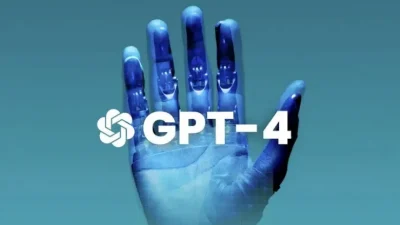The rapid development of artificial intelligence technologies has brought remarkable capabilities, including advanced language models like GPT-4. While these tools open up new opportunities for productivity, creativity, and problem-solving, they also pose ethical challenges. Understanding the permissible and impermissible uses of GPT-4 is crucial to prevent misuse and ensure that AI remains a force for good.
The Scope of GPT-4’s Capabilities
GPT-4 is a versatile language model capable of performing a wide range of tasks, including:
- Generating creative content, such as stories, articles, and poems.
- Assisting with technical writing, documentation, and educational materials.
- Providing customer support by answering queries or troubleshooting problems.
- Translating languages and summarizing texts.
- Supporting research by analyzing data, generating hypotheses, and providing insights.
While these applications demonstrate GPT-4’s vast potential, they also underscore the importance of ethical guidelines to direct its use responsibly.
Ethical Principles Governing AI Usage
Before delving into specific scenarios, it is essential to understand the ethical principles underpinning GPT-4’s responsible usage:
- Transparency. Users must disclose when content is generated by AI to maintain trust and prevent deception.
- Accountability. Users should take responsibility for AI-generated outputs, ensuring they align with ethical and legal standards.
- Fairness. Avoiding bias in AI outputs is critical to ensure equitable treatment of all individuals and groups.
- Privacy. Sensitive data must not be used to train or interact with GPT-4 without proper consent.
- Safety. Content generated should not promote harm, whether physical, psychological, or societal.
Permissible Uses of GPT-4
Enhancing Education and Learning
GPT-4 can serve as a powerful educational tool, providing assistance with:
- Explaining complex topics in simpler terms.
- Generating learning materials, such as quizzes or summaries.
- Acting as a virtual tutor for students who need help with homework or projects.
Educational institutions should ensure that the use of GPT-4 complements traditional teaching methods rather than replacing human instructors.
Streamlining Business Operations
Businesses can benefit significantly from GPT-4 in areas such as:
- Customer service automation.
- Drafting emails, reports, and other corporate communication.
- Assisting in brainstorming and planning by generating ideas or creating frameworks.
However, businesses should disclose when customers are interacting with AI rather than a human.
Creative Writing and Content Generation
From generating fictional stories to creating engaging marketing copy, GPT-4 offers immense potential for creativity. Artists and writers can use the model as a collaborator to enhance their work.
Research and Development
Researchers can use GPT-4 to analyze large datasets, draft research papers, and generate ideas for future studies. It can act as a catalyst for innovation by providing insights across diverse disciplines.
Impermissible Uses of GPT-4
While GPT-4 has numerous beneficial applications, there are clear boundaries for its ethical use. Misuse can lead to harm, misinformation, or violations of privacy. Below are examples of unethical scenarios:
Generating Misinformation and Fake News
Using GPT-4 to produce deceptive content, such as fake news, manipulated images, or fabricated data, can undermine public trust and create confusion. For example:
- Publishing AI-generated misinformation under the guise of credible journalism.
- Fabricating statistics or reports to influence public opinion.
Engaging in Malicious Activities
GPT-4 should not be used to:
- Develop malware or assist in hacking.
- Generate content that promotes violence, hate speech, or discrimination.
- Aid in illegal activities, such as fraud or impersonation.
Violating Privacy
AI should not be trained or used to process sensitive personal information without explicit consent. For instance:
- Extracting personal data from conversations for unauthorized purposes.
- Using GPT-4 to recreate sensitive documents or confidential information.
Exploiting Vulnerabilities
Exploiting GPT-4 to manipulate individuals, such as through phishing emails or scams, is unethical and harmful. This includes using AI to impersonate trusted entities or individuals.
Balancing Risks and Benefits
Understanding both the positive and negative potentials of GPT-4 allows users to balance risks and benefits. Implementing safeguards, such as regular audits, transparency practices, and ethical training for developers, can mitigate the risks of misuse.
Case Studies: Ethical and Unethical Applications
Ethical Example: Supporting Healthcare
A medical organization uses GPT-4 to assist doctors by generating patient reports based on clinical data. The model is programmed to follow strict privacy guidelines and does not retain or process sensitive information without authorization. The outcome improves efficiency and reduces administrative burdens on healthcare professionals.
Unethical Example: Creating Deepfakes
A user employs GPT-4 to generate text scripts for deceptive videos aimed at spreading propaganda. This misuse not only violates ethical principles but also poses societal risks by undermining trust in digital content.
A Comprehensive Comparison: Ethical vs. Unethical Uses
| Aspect | Ethical Use | Unethical Use |
|---|---|---|
| Transparency | Disclosing AI involvement | Concealing AI’s role |
| Privacy | Protecting sensitive data | Misusing personal information |
| Intent | Supporting education and innovation | Engaging in fraud or manipulation |
| Impact | Benefiting society | Causing harm or spreading hate |
Ethical Guidelines for Developers and Users
- Developers should:
- Ensure models are trained on diverse and unbiased datasets.
- Implement safety mechanisms to prevent misuse.
- Provide clear documentation on the intended use of the model.
- Users should:
- Use GPT-4 responsibly and in alignment with ethical standards.
- Avoid tasks that could harm individuals, groups, or society.
- Report vulnerabilities or misuse to relevant authorities.
Challenges in Enforcing Ethical Use
Despite best efforts, enforcing ethical use remains a challenge. Key issues include:
- Lack of Awareness. Many users may not fully understand the potential risks of misuse.
- Difficulty in Monitoring. Policing the vast range of applications for GPT-4 is complex.
- Global Differences. Ethical standards vary across regions and cultures, complicating the creation of universal guidelines.
Conclusion
GPT-4 is a powerful tool with the potential to drive significant progress across various domains. However, its misuse can result in harm, misinformation, and ethical violations. By adhering to ethical principles, fostering transparency, and implementing safeguards, users and developers can ensure that GPT-4 contributes positively to society.






